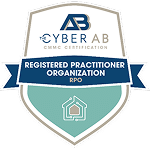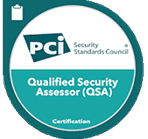The CrowdStrike-Microsoft outages on July 19, 2024, were primarily caused by a faulty update to CrowdStrike’s Falcon sensor for Windows. This update inadvertently triggered widespread “blue screen of death” errors on Windows systems, leading to significant disruptions across various sectors, including airlines, banking, media, emergency services, etc.
Microsoft’s Azure cloud platform was also impacted due to its extensive integration with affected systems running CrowdStrike’s software. CrowdStrike quickly acknowledged the issue, stating it was not due to a cyberattack but a technical mishap in their update processes.
This incident underscores the critical importance of robust configuration management, particularly for small—to mid-sized businesses (SMBs) that rely heavily on integrated systems for daily operations.
Understanding the Core Technical Issues
The Misconfiguration Error
The outage’s root cause was an incorrect parameter in the CrowdStrike Falcon sensor update. This faulty parameter caused conflicts with Windows system processes, resulting in the notorious “blue screen of death” errors. A misconfigured content signature in the update misidentified critical system files as malicious, leading to widespread system crashes.
Detailed Breakdown of the Error:
- Parameter Conflict: The incorrect parameter in the update clashed with essential Windows system processes, triggering a series of cascading failures that disrupted the normal functioning of critical system components across several global industries, including aviation, emergency services, banking, etc.
- Content Signature Misconfiguration: The update included a misconfigured content signature designed to identify and validate legitimate system files. This misconfiguration led the Falcon sensor to wrongly categorize vital system files as threats.
- Resultant System Crashes: As the sensor began quarantining or blocking these critical files, the affected systems experienced fatal errors, resulting in blue screen errors that rendered machines unusable until resolved.
Impact on Integrated Systems
The misconfiguration affected individual CrowdStrike software systems and had cascading effects on integrated platforms like Microsoft Azure. This widespread disruption highlights how interconnected systems can amplify the impact of a single error, leading to significant operational downtime across various industries.
Many organizations rely on a combination of cybersecurity tools and cloud services, so a fault in one component can ripple through the entire ecosystem, exacerbating the severity of the incident. Businesses using integrated services experienced interruptions not only in their endpoint protection but also in their cloud-based applications and services, compounding the operational challenges and recovery efforts.
Importance of Configuration Management
Configuration management plays a vital role in preventing such errors. It involves the systematic handling of system configurations to ensure integrity and consistency. Proper configuration management would have identified and rectified the misconfiguration before the update was deployed, thus preventing the outages.
Configuration management plays a vital role in preventing such errors. It involves the systematic handling of system configurations to ensure integrity and consistency. Proper configuration management would have identified and rectified the misconfiguration before the update was deployed, thus preventing the outages.
“This outage could be considered a clear example of the disastrous possibilities when proper due diligence, oversight, and System Development Lifecycle (SDLC) controls are inadequate or inappropriately executed. Organizations of all sizes and shapes need to a) ensure change management and development controls are adequate to avert such a catastrophe within their own organization, and b) be sure they have considered single points of failure within their use of vendors that can affect their ability to provide services in line with their service level agreements” – Brad Lyons (CISA, CISSP, CCSFP, CHQP, QSA, CISM, CRISC), Sr. Practice Director at 360 Advanced.
Below are some importance configuration management best practices to consider:
- Implement Robust Testing Protocols SMBs should implement robust testing protocols to simulate real-world scenarios and identify potential configuration issues before they affect live systems. This proactive approach helps mitigate risks associated with software updates and changes.
- Establish Comprehensive Change Management Policies SMBs must establish and adhere to comprehensive change management policies that include detailed documentation of changes, approval workflows, and rollback plans. These policies ensure that all changes are systematically reviewed and authorized, reducing the risk of misconfigurations.
- Invest in Continuous Monitoring Tools Investing in continuous monitoring tools is crucial for SMBs. These tools can help detect and rectify misconfigurations promptly, preventing potential outages. By providing real-time insights into system configurations, automated monitoring solutions enable quick identification and resolution of issues, ensuring system stability.
- Ensure Role-Based Access Controls Implementing role-based access controls (RBAC) is a key strategy for SMBs. By restricting configuration changes to authorized personnel, RBAC significantly reduces the risk of accidental or unauthorized changes. This enhances overall system security and stability, making it a crucial practice for SMBs to adopt.
- Develop Incident Response Plans Developing and regularly updating incident response plans is crucial for SMBs. These plans should outline the steps to be taken in case of a misconfiguration or outage, ensuring a swift and coordinated response to minimize downtime and operational impact.
- Foster a Culture of Continuous Improvement SMBs should foster a culture of continuous improvement, where lessons learned from incidents are used to enhance configuration management practices. Regular training and updates on best practices help keep the team informed and prepared for potential challenges.
Assessing Enterprise Risk Posture
In Static Environments
For systems and processes with minimal change, risk assessments focus on evaluating established configurations, security controls, and compliance with policies. This includes:
- Routine Audits: Conduct regular security audits to ensure that configurations and controls are up-to-date and effective against known threats. Static risk assessments often involve in-depth reviews of existing policies, procedures, and security measures to verify their adequacy.
- Vulnerability Scanning: Regularly perform vulnerability scans to detect any security weaknesses that may have been overlooked. Static environments benefit from scheduled scans that identify and address known vulnerabilities before they can be exploited.
- Compliance Checks: Ensure adherence to regulatory requirements and industry standards. Static risk assessments often involve verifying that systems comply with necessary security frameworks and protocols.
In Dynamic Environments
Dynamic environments, characterized by frequent updates, changes, and evolving threats, necessitate a more flexible and continuous approach to risk assessment:
- Continuous Monitoring: Implement real-time monitoring tools to track system performance and detect anomalies as they occur. Dynamic environments require constant vigilance to identify and respond to new threats promptly.
- Adaptive Risk Management: Develop adaptive strategies that can quickly address new vulnerabilities introduced by system changes or emerging threats. This includes using automated tools to adjust security measures in response to real-time data.
- Change Management Integration: Integrate risk assessment with change management processes to evaluate the impact of new deployments, updates, or configurations before they go live. This ensures that changes do not introduce new risks or vulnerabilities.
- Incident Detection and Response: Enhance the ability to swiftly detect and respond to incidents. Dynamic environments often involve rapid changes that could lead to new security incidents, so having a robust incident response plan is crucial.
Unified Approach
To effectively manage risk in static and dynamic environments, organizations should adopt a unified approach that combines the stability of routine assessments with the flexibility required for dynamic scenarios. This includes:
- Comprehensive Risk Management Framework: Develop a framework that integrates static and dynamic risk assessment practices, ensuring coverage across all operational areas.
- Holistic Visibility: Maintain visibility across all systems and processes to understand how changes in one area might impact others. This helps identify potential cascading effects and manage interdependencies.
- Regular Reviews and Updates: Continuously review and update risk assessment procedures to adapt to changing environments and emerging threats. This iterative process ensures that risk management practices remain relevant and effective.
Implementing Configuration Management
Proactive Steps
Given the lessons from the CrowdStrike-Microsoft outages, it is highly advisable to take proactive steps today to implement thorough configuration management services. Investing in these services secures your business’ future, safeguards against technical mishaps, enhances security, and ensures uninterrupted operations. By adopting a proactive approach, companies can protect themselves from costly downtime and position themselves for long-term success and resilience in an increasingly complex cybersecurity landscape.
Sign Up for the 360 Cyber Insights Newsletter!
Benefits for SMBs
Configuration management services transform SMBs’ IT management and offer significant advantages. These services are crucial for maintaining operational continuity and security. Companies can effectively minimize downtime by proactively managing configurations ensuring uninterrupted operations.
Additionally, enhanced security is achieved by setting up systems according to best practices and standards, which reduces the risk of breaches and cyberattacks. Consequently, this approach safeguards sensitive data and improves operational efficiency, leading to more stable and reliable IT systems.
Cost savings are another significant benefit. By avoiding costly downtime and reducing the likelihood of security incidents, businesses can cut expenses related to emergency repairs and lost productivity. This, in turn, leads to increased customer confidence, as demonstrating a commitment to high security and operational standards strengthens customer relationships and provides a competitive edge.
Furthermore, effective configuration management assists in regulatory compliance, thereby reducing the risk of non-compliance penalties and showcasing a dedication to maintaining security and operational standards.








